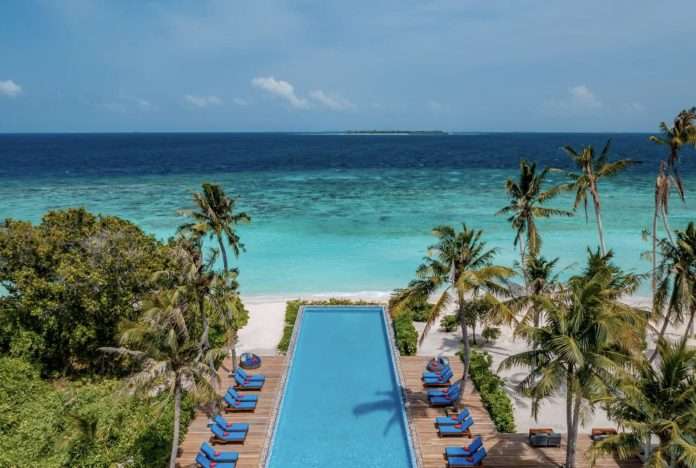In the Maldives, luxury resorts Siyam World and Nova Maldives embrace sustainability and conservation as the tropical destination is navigating the challenges brought on by climate change.
There’s nothing quite like a 15-hour flight to make you feel the absurdity of our modern world. I spent much of my time last October on a direct flight from Los Angeles to Doha — the first leg of a 40-hour door-to-door trip to the Maldives — reflecting on this (in the middle seat no less). Even as long as a 15-hour trip is to get to Qatar, it’s a marvelous (if terrifying) feat of progress that I can fly halfway around the world in a day when a century ago a trip like that would have taken months, if not a year, by boat.
Visiting the island nation of the Maldives — the lowest-lying country on the planet — was a longtime bucket-list trip for a Rust Belt girl like me. I grew up surrounded by Appalachia and abandoned steel mills dreaming of tropical, beachy destinations. Even though sunny Los Angeles is not a bad place to call home today, the pandemic confinement further amplified my longing for those white sandy beaches, overwater bungalows, and the warm Indian Ocean waters of the Maldives — especially given they may not be around much longer.
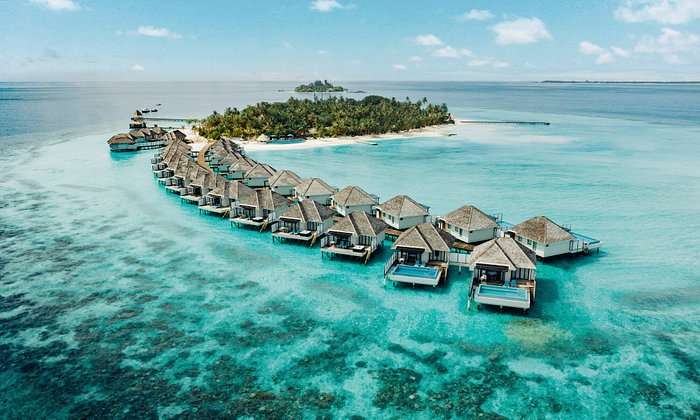
The Maldives is particularly vulnerable to rising sea levels brought on by warming ocean temperatures as a result of climate change. Fifteen-hour flights don’t help matters, either, as the aviation industry produces about 2.5 percent of total global greenhouse gas emissions fueling the crisis. But I’ve long been a champion of exposure as motivation, especially now as a parent. It’s hard to convince people to help protect things they don’t understand or haven’t experienced firsthand. I wanted my daughter to take a trip she’ll remember long after I’m gone and I also wanted her to understand the implications modernity is having on places as remote and magical as the Maldives islands — even if it meant the middle seat on a 15-hour flight followed by a six-hour layover, another five-hour flight, a three-hour layover, and a 45-minute seaplane ride (window seat!) just to get to our first destination: a speck of that magnificent, silky sand somewhere off the southern coast of India.
Sun Siyam World and Nova Maldives
Our ten-day trip was split between two all-inclusive resorts: Sun Siyam World and Nova Maldives. First was Sun Siyam World, one of the largest resorts in the Maldives, with nearly 500 villas, six kilometers of coastline, an inflatable water park, four pools, tennis, badminton, paddle courts, a soccer pitch, a world-class spa, a beauty salon, as well as a kids club, and a range of top-tier restaurants. As guests of the resort, we were treated to a stunning two-story beachfront villa with a private pool, a butler service, and a packed itinerary that included a coconut tree planting — part of the resort’s efforts to become more self-sustaining by growing some of its own food — as well as coral planting alongside the resort’s marine biologist, the affable Mariyam Thuhufa.
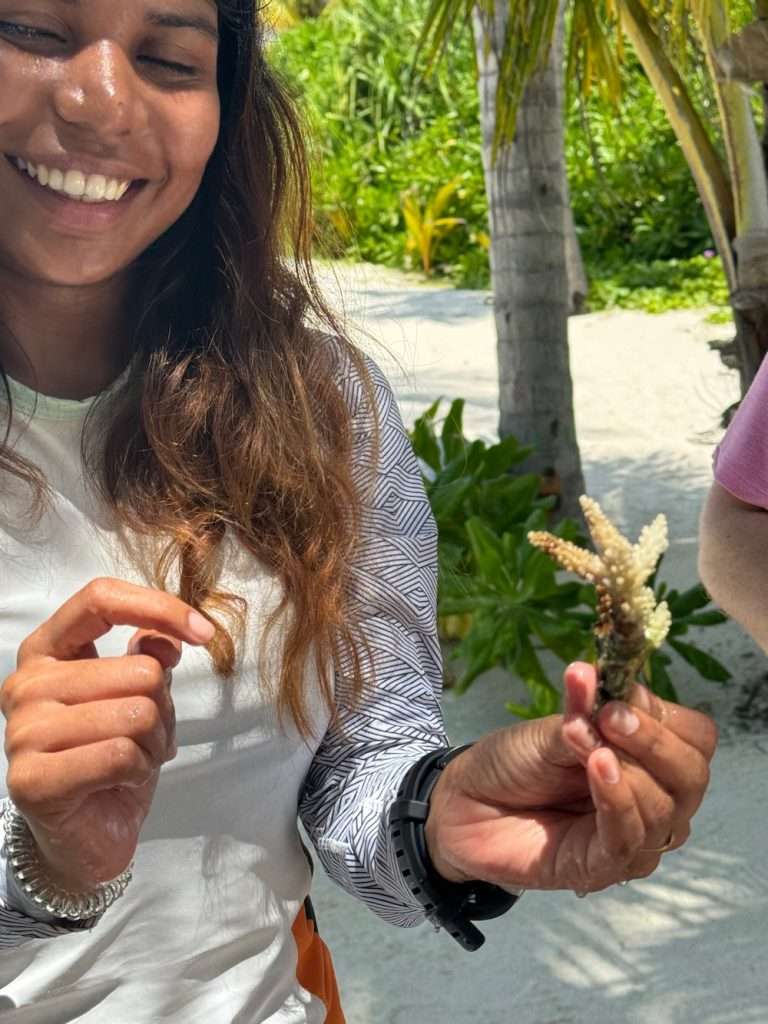
If you’re traveling with kids, Siyam World is about as good as it gets. It’s the Disney World of the Indian Ocean. My daughter loved jumping into the warm, clear waters from the giant inflatable water park. We played pool, drank fresh coconut juice, swam with colorful fish, stalked the island’s fruit bats, got a henna tattoo, cuddled with the island’s cats and baby goats, and enjoyed some of the best food either of us had ever tasted. While the island boasts several high-end restaurants, we found the buffet at its main restaurant, Tempo, superior. The plant-based options were abundant and exceptional: perfectly spiced curries and dosa, stewed beans, salads, pancakes, creative tofu dishes, and far too many delicious dairy-free desserts to eat. Months after our trip, my daughter still talks about how much she misses the buffet at Tempo. Even in a culinary destination like Los Angeles, it has become the bar by which she measures all other restaurants — and, much to my dismay, often my cooking, too.
About a 90-minute seaplane ride south of Siyam, we spent the second half of our trip at the lovely Nova Maldives. There, we enjoyed a gorgeous overwater bungalow with more never-boring views of the Indian Ocean. Nurse sharks, giant sting rays, and all manner of colorful fish were regulars just steps away from our door. Blue herons made frequent stops on our deck and accompanied us to the infinity pool where sweeping views of the seemingly endless Indian Ocean offered us a much-needed reprieve from the chaos of the rest of the world.
One of the highlights at Nova, and for other resorts in the South Ari Atoll where it’s located, is swimming with whale sharks and manta rays (Nova is a certified Responsible Manta Operator). The trip is led by Toby Corren, the island’s marine biologist and dive instructor. It’s a full-day boat ride there and back and we ultimately decided not to go even though I was having tremendous success keeping my trip-ruining seasickness at bay by wearing a Reliefband. The wristband uses novel tech to send pulses to block nerves that trigger motion sickness, something I’m particularly vulnerable to. Even just being in shallow ocean water can make me seasick, and having had bad experiences in the past, even while medicated, I was a skeptic. But after wearing the band for parts of our flight from Doha to Malé (the capital of Maldives), and on all of our seaplane rides, I couldn’t believe how well it worked. Taxiing on the water for those seaplanes would normally have me looking for a sick bag, but I didn’t even feel slightly nauseated. I found the Reliefband to be an exceptional alternative to nausea prevention medications that can cause drowsiness — something I wanted to avoid while traveling with a child. Having just spent some time with mantas in Hawaii, too, my daughter was more keen on the infinity pool than the boat, and I wasn’t about to turn down time to curl up in a lounge chair with a book.
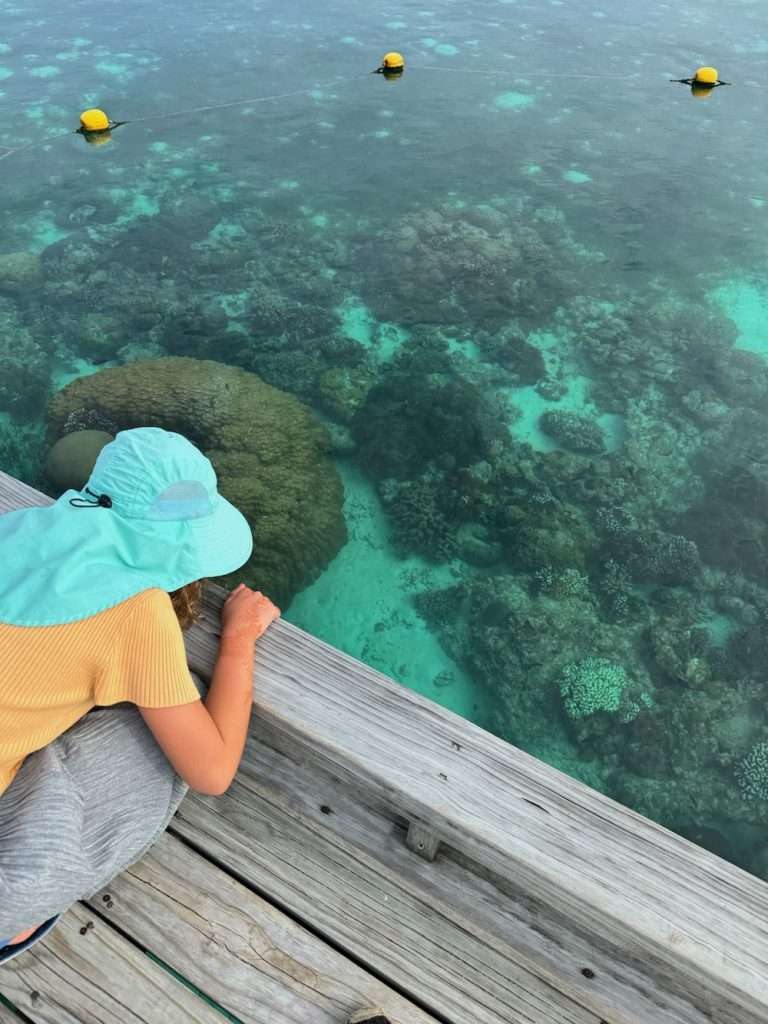
Most of the Maldives islands cater to newlyweds, and Nova, which is significantly smaller than Siyam (you can walk the whole island in about ten minutes versus the near-hour lap of Siyam), is far better suited for adults than kids as a result. But, after the activity-packed Siyam stay, we welcomed the slower pace at Nova. We lounged at the swim-up pool bar, where my daughter became a connoisseur of mocktails, enjoyed massages with reef views in glass-bottom bungalows, and sat under the island’s giant banyan tree, waiting for the fruit bats. A cooking class taught us Maldivian curry and how to make flatbread – something we regularly make at home now. The overwater sushi restaurant is a delight even for vegans. As part of the island’s sustainability commitments, the on-site restaurant Flames offers a plant-forward menu with comforts from home like a Beyond Burger, as well as innovative takes on local fare. We did struggle to find balanced plant-based options at the Soul Kitchen buffet for most of the rest of our meals but were sated by the views, the nonstop reef activity, and those delightful poolside mocktails.
Climate change in Maldives
Like Siyam and Nova, many of the Maldives resorts employ marine biologists to help promote and protect biodiversity including reef restoration. They work together on conservation efforts and restoration projects like coral planting. They’re also sharing data and ways to help slow the impacts of climate change and biodiversity loss. Climate change is hitting the luxury destination particularly hard. Recent reports published by NASA and the U.S. Geological Survey both found that as much as 80 percent of the archipelagic country’s 1,200 islands could become uninhabitable by 2050.
“Our islands are slowly being inundated by the sea, one by one,” Ibrahim Mohamed Solih, former president of Maldives, said during the COP26 climate summit in 2021. “If we do not reverse this trend, the Maldives will cease to exist by the end of this century.”
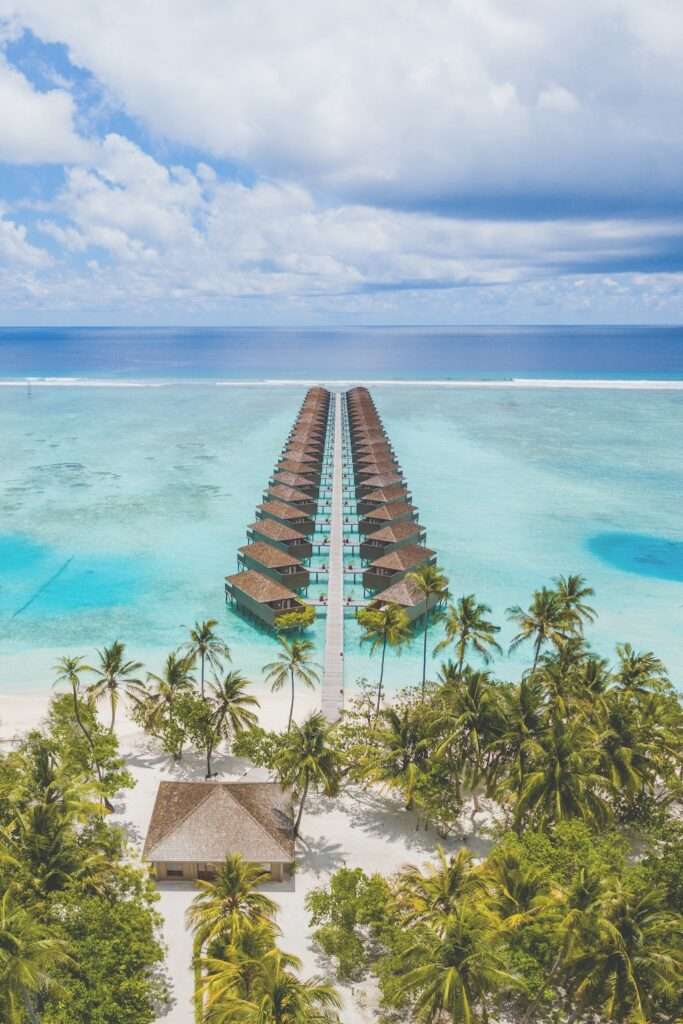
While it may not show at its ultra-luxury hotels and resorts that cater to paradise-seeking tourists, local Maldivians are seeing significant changes as a result of the climate crisis. Mohammed Nasheed, president of the Maldives from 2008 to 2012, is now a leading voice for climate change equity. He says severe erosion is affecting more than 90 percent of the islands and that there is no fresh groundwater for 97 percent of the country.
In 2016, 60 percent of the coral reefs surrounding the Maldives islands were lost to bleaching. The loss of reefs means the islands are at risk of rising waters. That’s particularly problematic “because IPCC [the Intergovernmental Panel on Climate Change] is predicting that by 2050 if the temperature rises 1.5 degrees Celsius we can lose 70 to 90 percent of corals in the whole world,” Aya Naseem a marine biologist and co-founder of the Maldives Coral Institute, told ABC.
“Things that we thought would happen towards the end of the century, we are experiencing now,” Aminath Shauna, the Maldives’ minister of environment, climate change, and technology, told ABC. For the world’s lowest-lying country — 80 percent of the islands are less than a meter above sea level — this is a big, potentially apocalyptic problem. And the luxury resorts that make the Maldives the destination that it is, are certainly partly to blame — putting pressure on resources, producing excessive amounts of waste, and, as a remote destination, relying on emissions-heavy planes and boats to bring tourists in. In 2018, the government announced 140 new properties were in the works.
While planting a tree and a few pieces of coral seemed a bit like a drop in a very big bucket to fill, they’re more than just symbolic gestures, especially for those inheriting the climate crisis, like my ten-year-old. Any good vacation is filled with unexpected highlights, and for both my daughter and myself, the tree and coral plantings at Siyam stood out. Our little coconut tree in a nursery filled with other saplings offered a glimpse of, quite literally, a fruitful future. “We have to come back in 25 years to see it,” my daughter said after we planted the tree. It’s a goal she’s mentioned several times in the months since our return, too.
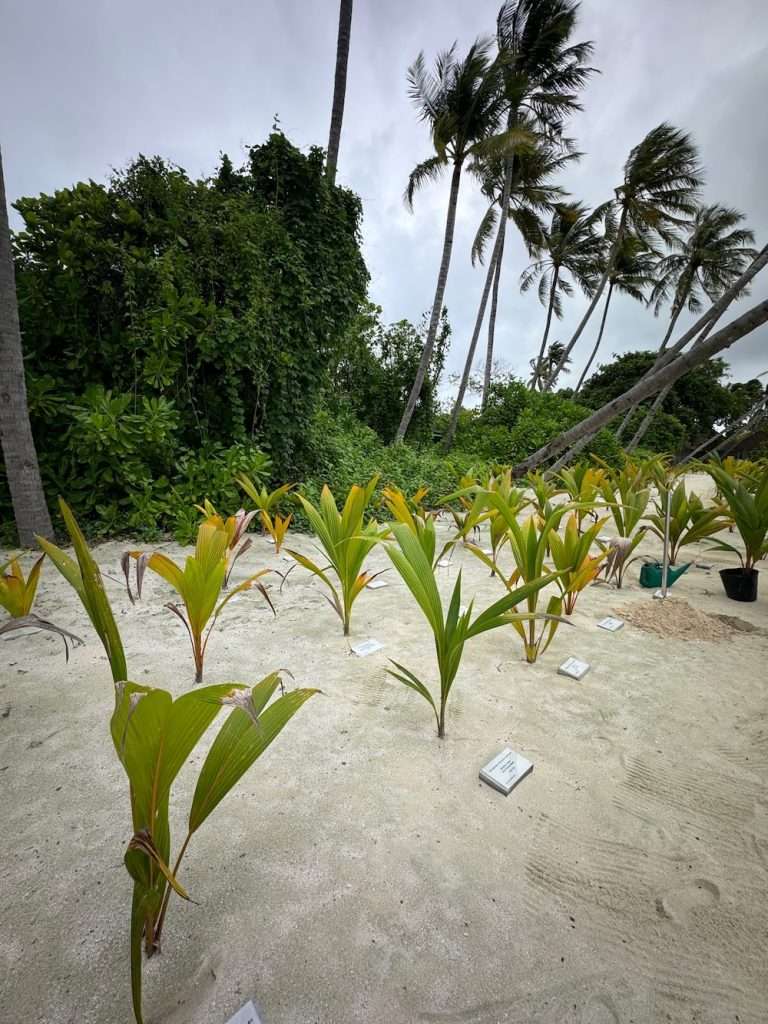
And, likewise, the reef restoration made us feel like we have to make a return trip to see how, or rather, if, all of these efforts work out. Thuhufa made it easy for my daughter to grasp the impact of planting coral — it’s a task kids younger than my daughter can do entirely on their own, from strapping the coral to the rebar ark to swimming it out and placing it underwater. This simple task can help to grow a new reef, that, in a few years, will sustain marine life and, critically, help protect the island from erosion.
I did manage to leave the science lessons and doom back in the rooms to find some time to enjoy — however fleeting — all the paradise these resorts have to offer. It’s difficult to compartmentalize the threats the islands face when this stunning paradise is sandwiched between the total collapse of its reefs due to rising sea levels and biodiversity loss. But I also found enjoying paradise to be the biggest motivator of all — especially watching my daughter having such a magical experience. Will it be here in 25 years for her to return to?
I sent notes and snapshots of the reef and tree planting to my daughter’s teacher back in Los Angeles hoping he’d forgive the extra few days she spent away from class for these irreplaceable experiences and lessons. Not only did my daughter feel like she made a difference, but she understood exactly the lasting benefit she was having to help protect paradise. No flight is too long for an experience like that, I told myself on the way home, that middle seat taking on a whole new meaning.
Related on Ethos:

